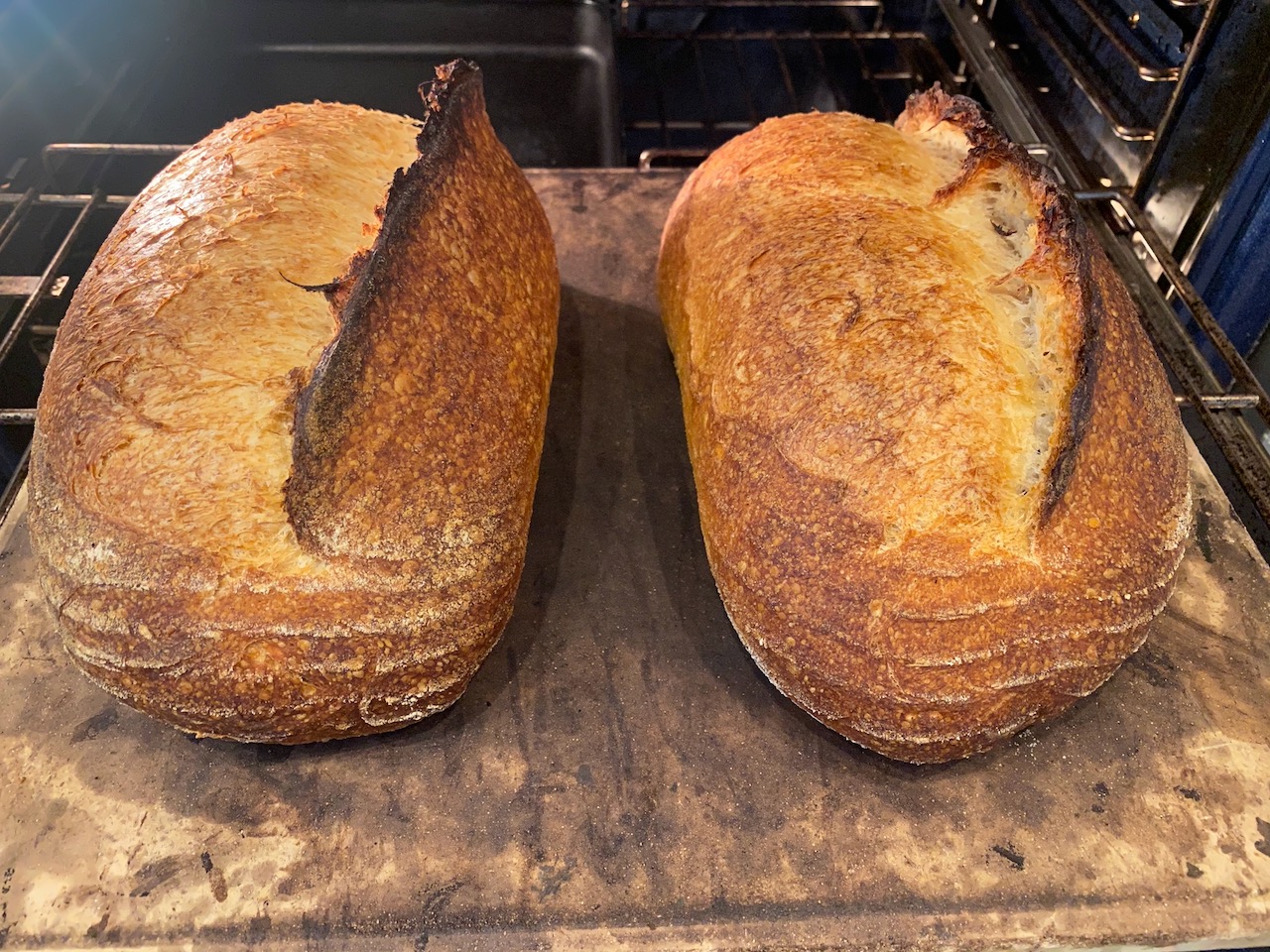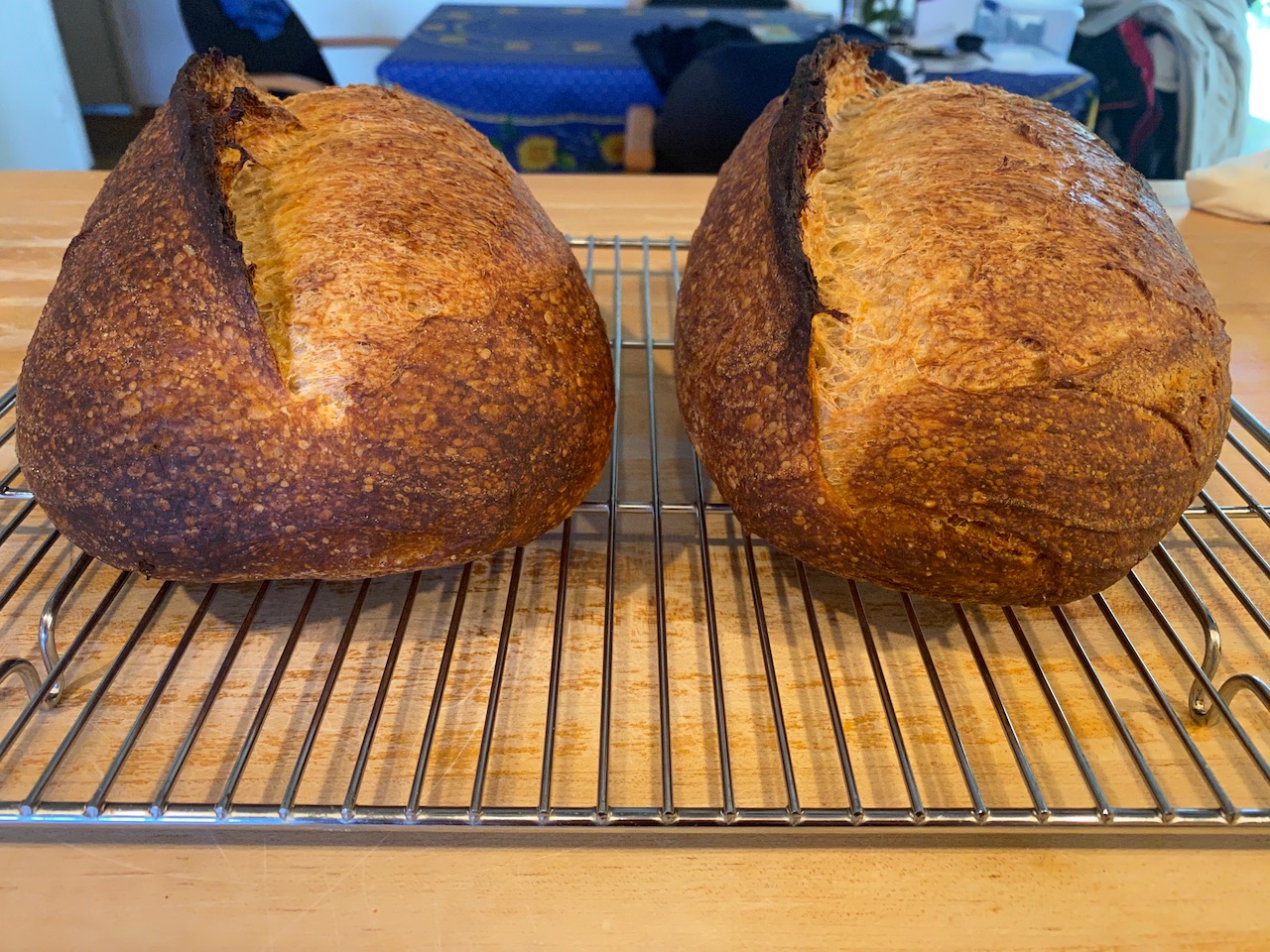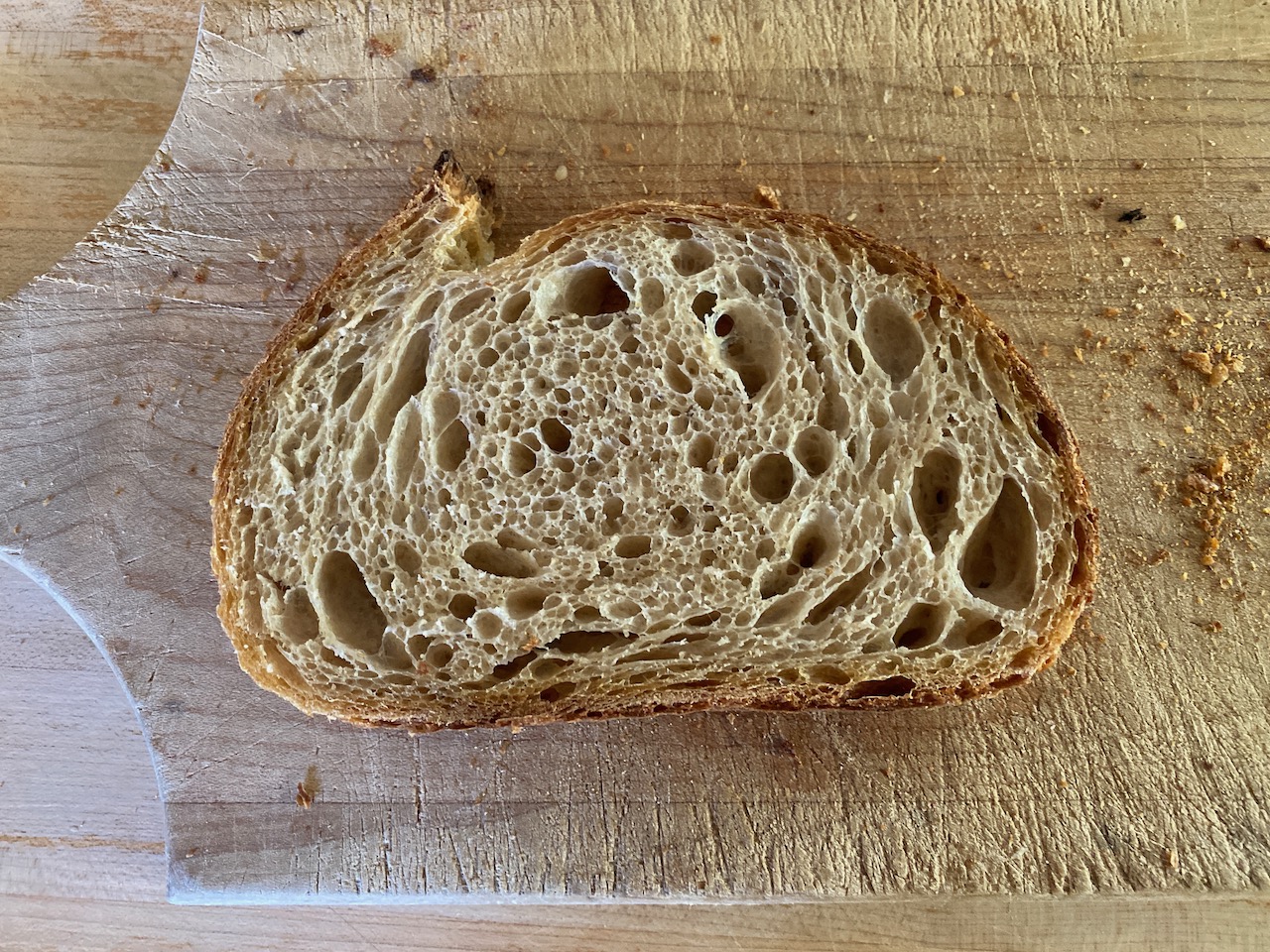SIP (shelter in place) causes me to very regularly make SIP (Sourdough In Place). All this possible thanks to my local baker "The Midwife and the Baker" which sells high quality bread flour and hard white and hard red wheat flour (nothing to be had for even typical low quality store flours in any store for weeks).
Practice makes perfect, and they're turning out better each time.



- dolfs's Blog
- Log in or register to post comments
Wow, look at those ears, great crust and oven spring, great work.
Benny
Beautiful loaves. Would love to know more about your process. Also tons of blistering so looks like a good amount of steam?
My process is nothing special (I think). In short:
Now, I suspect that the blisters are more the result of the overnight retard, but the over spring, ears and opening up comes from tight dough, good slash, and an appropriate amount of moisture. There are many different ways of doing the moisture, but this method works best for my situation.
Hope this helps.
Wow thank you for the overview. I do think the 3 day process is unique at least from what I’ve read so I’m eager to give it a try. I’ve tried shaping cold dough then proofing and baking, but not tried a second retard. Very intriguing.
Dag